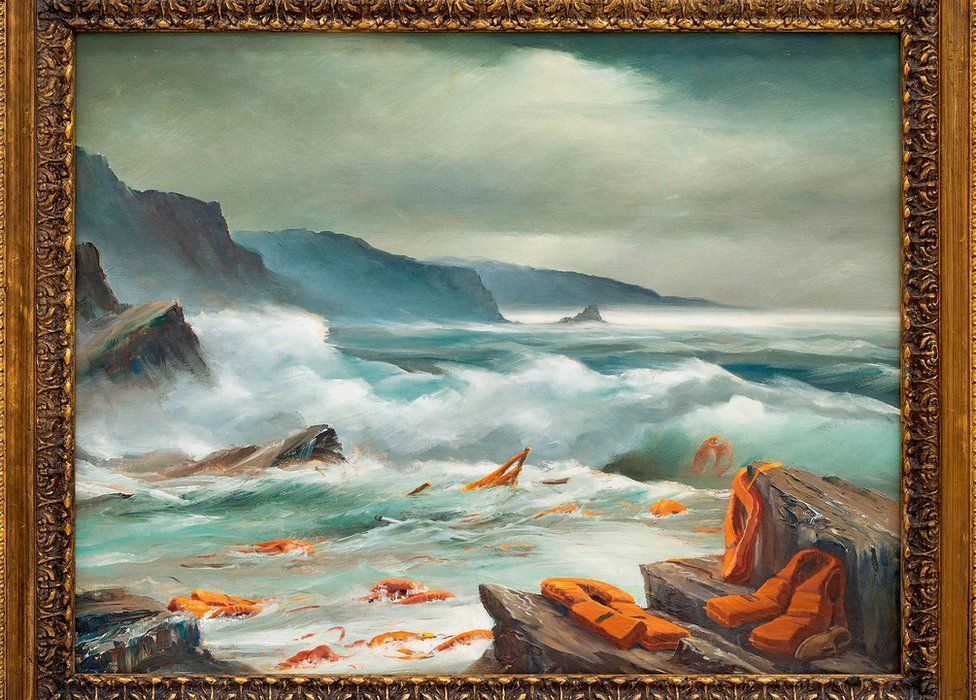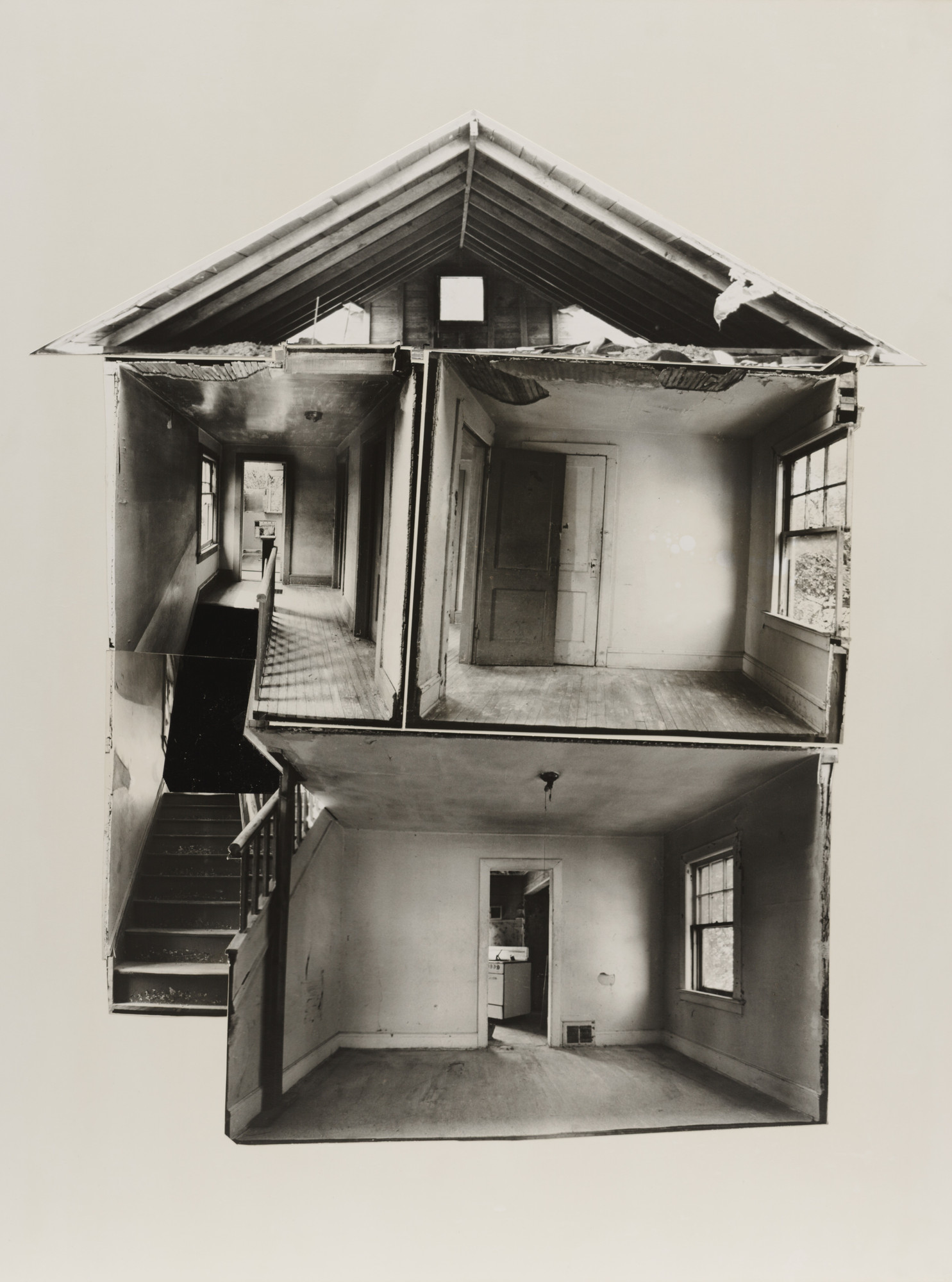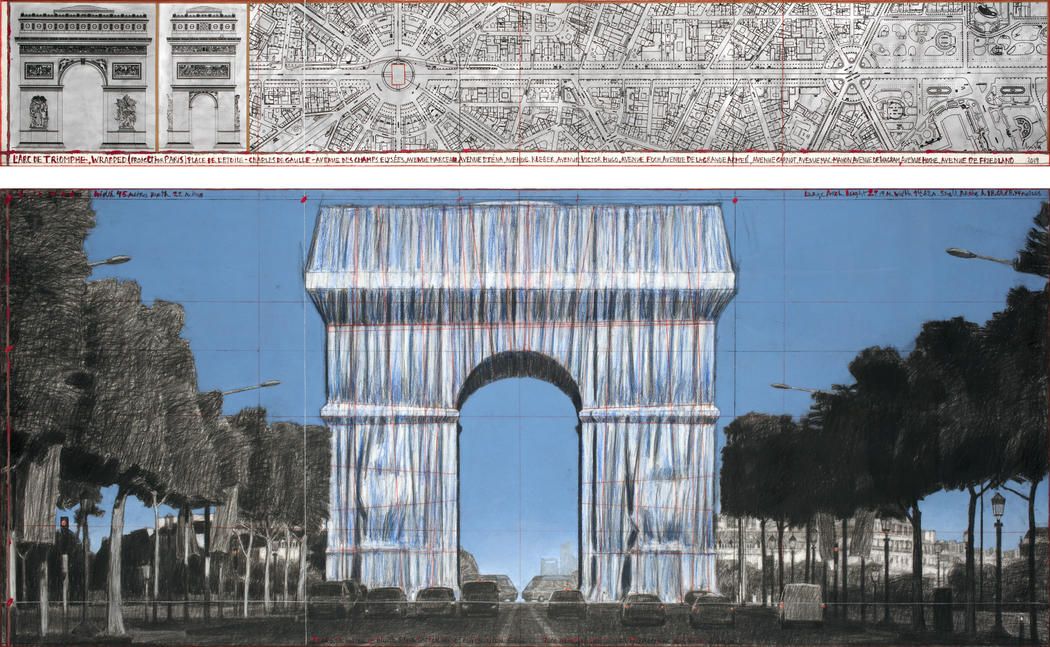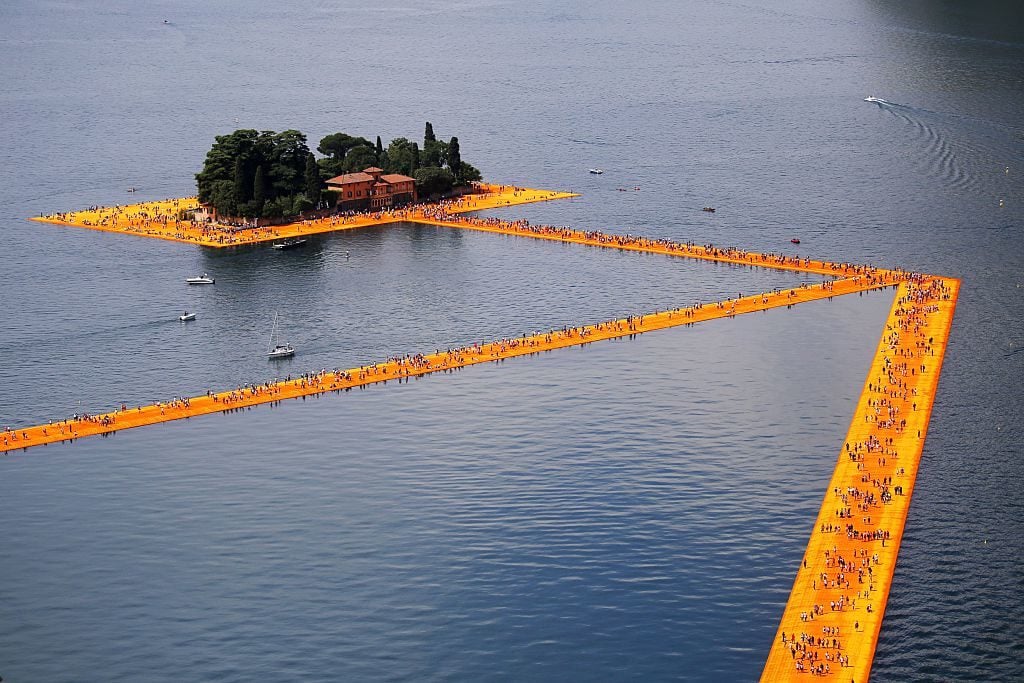Introduction
The quest for non-traditional art, that is perhaps the most succinct way to describe Postmodern art. Postmodernism is a combination of artistic matters that attempt to reject abstraction. There are similar art styles like Dada or Surrealism as similar formats of this artistic era. Much of postmodernism is ironic, satirical, skeptical, and focused on critiquing the universal truths that people live through day in and day out. Considering the first usage of the term in the 1970s, postmodernism goes against the Modern art era of idealizing humanity and this belief in progress.
Historically speaking the postmodern era met a time of questioning tradition and questioning authority from the Vietnam war protests, Civil Rights movement, Women's movement, and technological expansion through globalization. The postmodern era of art is nonetheless transferable from the 1970s to present. The many upheavals in society of protestation, movements were indicative of a need by society to see reform, change, and the betterment of humanity as a whole.
Art Exhibition
This line 'question tradition, question authority' is significantly the motto of this exhibition of art from Banksy, Gordon Matta-Clark, and Christo and Jean-Claude.
A more recent and notable graffiti artist that I would like to discuss here today is Banksy. Banksy which is a pseudonymous name England-based artist, political activist, and film director. To many Banksy is notably the anonymous artist who paints both poignant messages of the worlds harmful doings in strategically placed locations. Banksy is an artist who creates are that sells upwards of 15 million pounds at extensive art auctions or on walls in cities around the world. The value of postmodern art is arguably questioned by Banksy through his works. There are two pieces in particular that stand out to me namely "Show me the Monet" (2005) and "Mediterranean Sea View" (2017).
 |
| Banksy: Show me the Monet (2005) Source: https://www.sothebys.com/en/buy/auction/2020/contemporary-art-evening-auction-2/banksy-show-me-the-monet |
Banksy is an activist and painter combining critique on the worldly issues and critique on the art world all in one painting. "Show me the Monet" by Banksy painted in 2005 and sold at an auction for 7.5 million pounds is considerably one of the more expensive pieces that Banksy has ever created. Like most of Banksy's work it is all anonymous so anything beyond the date created is unknown. Taking and emulating the work of notable Impressionist artist Claude Monet's "The Water Lily Pond" (1899) and adding a modern twist of human waste with the two shopping carts and traffic cone. Banksy focuses our attention not on the temporal sense of art that Monet and the Impressionists are trying to evoke but rather yanks our momentary bliss back to reality with the realization that climate change and capitalism still dictate and harm much of the beauty that surrounds us. It is indicative of Banksy in this piece of his argument that the world we live in should be questioned and the traditions that we once saw the world as by Monet in the 1800s is no longer relevant. Viewing the art elements of this piece one can see the originality of Monet transcribed into this Banksy piece. The lily on the water, the bridge, and the surrounding green nature is starkly contrasted by the bright orange cone and metallic shopping carts. The placement of the cone and the carts are in the foreground distracting us from the actual beauty of the environment. The discomforting feeling of those items protruding from the painting and water asks the audience of why they are not able to simply reach out and clean it up.
The second Banksy piece that will be displayed here is titled "Mediterranean Sea View" (2017) painted and sold for 2 million pounds. This piece like the other is Banksy's continued sequence of emulating and satirizing the modern issues onto traditional paintings.
 |
| Banksy "Mediterranean Sea View" (2017) Source: https://www.sothebys.com/en/buy/auction/2020/evening-sale-london/banksy-mediterranean-sea-view-2017 |
Banksy in "Mediterranean Sea View" (2017) emulates the work of Rembrandt a Baroque era artist with the dramatic scenery, extreme landscape, and immensity of surroundings artistic style. As with Banksy there is a twist in the scenery of a mere sea view including numerous life vests indicative of his critique on the current refugee crisis. The piece shows the beautiful, daunting, and somber landscape of the sea, cliffs, and rocks contrasted by the bright orange life vests that refugees fleeing their home countries for political and social reasons wore these life vests embarking on dangerous journeys to a new place. The blue, brown, and dark colors are contrasted once again like the "Show me the Monet" with orange vests. By bringing our attention to the surrounding cloudy day, high ocean waves, and majestic cliffs we are pulled back to reality once more by seeing the life vests stranded like so many refugees facing the daunting journey ahead or have not survived.
The next artist that I will share here today is that of Gordon Matta-Clark. Matta-Clark considered an architect has his work displayed in MoMa and other galleries around the world. Matta-Clark is formally trained as an architect but began his 'cutting experiment' for which slices a literal piece of a soon to be demolished building for examination and re-evaluation. Consider the artistic movement of deconstruction, Matta-Clark is distinctly one of such artists. In his work "Bingo" (1974) Matta-Clark carves a slice from the demolished house on 349 Erie Avenue in New York. Matta-Clark had divided the building into fragments of the facade and removed each rectangular piece section by section. On the similar note of questioning tradition, Matta-Clark is scientific in his examination of this notion of comfort, domesticity, and privacy. By taking a piece of a building as a sculpture, Matta-Clark attempts to disorient the audience in seeing a 'home'. The stairs, the doorway, the texture of the siding, and the dulled colors. The nostalgic or reminiscent feeling that one attains from this work is a reminder of the temporal meaning of home. Homes fall apart and tradition is loss, but as Matta-Clark shows can be saved momentarily. Consider, the method of this sculpture and the size of it, the linear motion of the longevity of the house is contrasted by the short width of its time as a 'full-sized home'. It is now a mere fragment of domesticity.
 |
| Gordon Matta-Clark "Bingo" (1974) Source: https://www.moma.org/collection/works/91762?artist_id=6636&page=1&sov_referrer=artist |
The other piece by Gordon Matta-Clark that I will share is titled "Splitting" (1974) as with the piece mentioned above it was most fittingly that I provide context to the original concept of 'splitting' a fragment of a house. This Matta-Clark piece like that of the sculpture in which it is photography of a house split and reconstructed into the facade imagery of a house. The splitting of the rooms, stairwell, and attic all into one makes the artistic expression from sculpture to a figment of our thoughts on a house into one. Imagine closing your eye and wondering what a house looks like, this is most certainly what my mind thinks of. Matta-Clark nails this concept of questioning tradition by breaking down a house into something we thought we saw as a front door, two windows, but is instead our thoughts and notions of the spaces inside. This photography/artistic build uses the various exposures of the lighting in the rooms and the blurred portions of the photography to show this 'home'. A place as a blur in a moment of time that we live in.
 |
| Gordon Matta-Clark "Splitting" (1974) Source: https://www.moma.org/collection/works/50871?artist_id=6636&page=1&sov_referrer=artist |
The final artists that I will be sharing here today is that of Christo and Jean-Claude's public installations. The installations they have created are enormous, monumental, and iconic displays of artistic contemporary feats. Considering the scope of their work like that of the two artists discussed today so far, it is Christo and Jean-Claude who take reforming tradition to a whole other level. The unique part of Christo and Jean-Claude's work is it is a progression and work in progress sort of installation. There is the "L'Arc de Triomphe, Wrapped" set to be displayed September to October of 2021 but has been planned since 1962. The artistic expression made by this piece is 25,000 square meters of recyclable polyprolene fabric wrapped around 7,000 meters of of red rope in covering the L'Arc de Triomphe in Paris. There is no greater artistic feat that than as done by Christo and Jean-Claude. The expansive piece covers a treasure of France, in pondering its momentary time when it is irrelevant. The soon to be art will be magnificent in color with the stylistic blue and red covering a great landmark of the world.
 |
| Christo and Jean-Claude "L'Arc de Triomphe, Wrapped" Source: https://www.christojeanneclaude.net/artworks/arc-de-triomphe-wrapped/ |
The other Christo and Jean-Claude piece that I will describe here is "Floating Piers" (2016). It is 100,000 square meters of bright yellow fabric placed on top of 220,000 high-density polyethylene cubes that are floating on the water. Visitors of the art piece can walk on water on these cubes as they float, undulate, and move with the land. The piece was Lake Iseo in Italy and was open from June to July of 2016. The concept behind it was being an extension of the street, the city, and the people being completely free and accessible. The light and color the fabric undulating on the water seemed to move with the flow and show the landscape from a different view on the water and as one was walking. One can tell from aerial photos and video the landscapes connection is changed dramatically by this connector. It is a sight to see and a tremendous feat of 'walking on water'.
 |
| Christo and Jean-Claude "Floating Piers" (2016) Source: https://www.christojeanneclaude.net/artworks/the-floating-piers/ |
Would I want these pieces?
The Christo and Jean-Claude piece are really magnificent, something that should be visited by all. The Matta-Clark pieces are ones I would love to view but not have. As they challenge this idea of a home. Consider having theses pieces in a home. You would perpetually be wondering what home is. The Banksy pieces are in particular ones I find captivating and stark reminders of the reality we live in. The postmodern era can only be so 'modern' as to be a moment in time where we feel, we hear, and we see around us the issues we humans face. It is artists like Banksy who masterfully question, beautify, and quantify through capital the value of art and the daily issues people face. I would most enjoy having a Banksy piece as a screensaver or printed image rather than the actual piece, that is unless it is a fundraiser the value of it has no significance in my home.
Sources:
“BANKSY: MEDITERRANEAN SEA VIEW 2017: Rembrandt to Richter.” Sotheby's, www.sothebys.com/en/buy/auction/2020/evening-sale-london/banksy-mediterranean-sea-view-2017.
“Banksy's Show Me the Monet Painting Sells for £7.5m at Auction.” The Guardian, Guardian News and Media, 22 Oct. 2020, www.theguardian.com/artanddesign/2020/oct/22/banksys-show-me-the-monet-painting-sells-for-75m-at-auction
“BANKSY: SHOW ME THE MONET: Contemporary Art Evening Auction.” Sotheby's, www.sothebys.com/en/buy/auction/2020/contemporary-art-evening-auction-2/banksy-show-me-the-monet.
“Christo and Jeanne.” Claude, www.christojeanneclaude.net/artworks/arc-de-triomphe-wrapped/
“Christo and Jeanne.” Claude, www.christojeanneclaude.net/artworks/the-floating-piers/.
Matta-Clark, Gordon. “Gordon Matta-Clark. Bingo. 1974: MoMA.” The Museum of Modern Art, www.moma.org/collection/works/91762?artist_id=6636&page=1&sov_referrer=artist.
Matta-Clark, Gordon. “Gordon Matta-Clark. Splitting. 1974: MoMA.” The Museum of Modern Art, www.moma.org/collection/works/50871?artist_id=6636&page=1&sov_referrer=artist.
Thank you for sharing these beautiful pieces, Kevin. I really enjoyed the Banksy works you presented and how they speak volumes about society through satirical art. I find that Banksy's homage to previous eras of art stylized to confront modern problems captivating. Your analysis of these works is spot on. I also enjoy the pieces by Christo and Jean-Claude. I think that this kind of "installation" art is extremely unique. It is truly the best way to get art in front and center of everyone's attention. The relationship between art and the user is changed too. Instead of just seeing and contemplating art, one can engage in art in other ways like a walk on it, a drive around it, etc.
ReplyDeleteThe way in which we are able to interact with art has been one of the most transformative changes to art in recent years, I think. As Gerald noted, we are able to walk around it, under it, drive through it, etc. The later half of your art pieces intrigued me the most because of that very reason, they are huge pieces of art that invite the viewer to interact with it and add another dimension to the art experience. The only downside to these art pieces is that they would be difficult to own, haha.
ReplyDelete